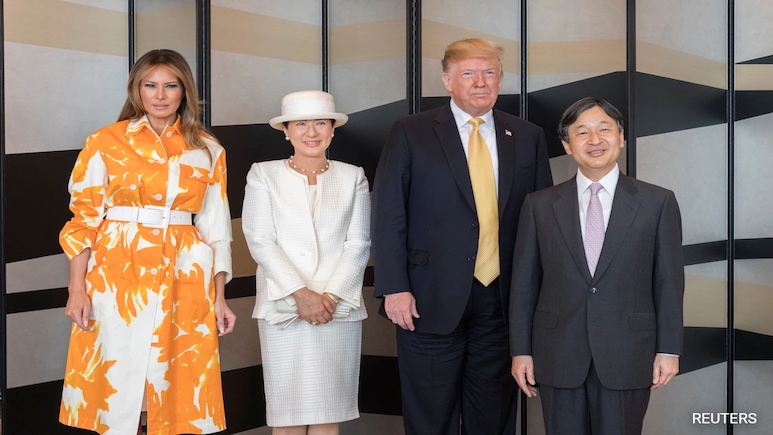
US President Donald Trump is set to meet Japanese Emperor Naruhito on Monday in the Imperial Palace in Tokyo, six years after their previous meeting during the first Trump presidency.
Here are some key facts about Japan's monarchy.
Who Is Current Emperor Of Japan?
Emperor Naruhito assumed the reign in 2019, three years after his father Akihito, then Emperor and now Emperor Emeritus, said he feared increasing age would make it hard to carry out his duties. It marked the first imperial abdication since Emperor Kokaku stepped down in 1817. Naruhito, 65, and Empress Masako, 61, both studied at Oxford University and attended British Queen Elizabeth's funeral in 2022.
Akihito, born in 1933, made efforts throughout his reign to reconcile Japan with its former colonies in Asia and to help it project an image as a peace-loving nation. He and Empress Emerita Michiko modernised the royal family, bringing it closer to ordinary people.
Naruhito's grandfather, Hirohito, known posthumously as the Emperor Showa, was treated as a god but renounced his divine status after Japan's World War Two defeat in 1945. Under the constitution, drafted by US occupation forces, the emperor became the "symbol of the state and the unity of the people."
What Is Status Of Women In Japanese Royal Family?
Women may not take the throne, although historically females have acted as place-holders who could not pass the throne to their offspring. Naruhito has a 23-year-old daughter, Princess Aiko. Upon Naruhito's death, the throne will pass to his younger brother, Prince Akishino, then to Akishino's 19-year-old son Prince Hisahito. Prince Hitachi, 83, Akihito's younger brother, is next in line.
Akishino's daughter, then Princess Mako, abandoned her royal title when she married her commoner sweetheart from college Kei Komuro in 2019. The couple, both 34, have since been based in New York City, where Komuro practices as a corporate lawyer at Lowenstein Sandler.
How Do Japanese People See The Empweror?
Traditionalists believe Japan's imperial institution is the world's oldest hereditary monarchy. Eighth-century chronicles say the sun goddess Amaterasu Omikami bequeathed her grandson a mirror, jewels and a sword, which he gave to the first emperor, Jimmu. The chronicles give Jimmu's reign as 660-585 BC, but there is doubt as to whether he ever existed.
For most of the imperial institution's history, the emperor lacked direct political power and was primarily a symbolic and religious figure. Under the Meiji constitution, promoted in 1889, the emperor became a constitutional monarch as well as a divine sovereign who was the focus of loyalty for his subjects.
Japanese wartime leaders used a state Shinto religious ideology to mobilise the masses to fight World War Two in the name of a divine emperor, but Japan's post-war constitution established the separation of church and state. State Shinto was abolished. The emperor performs about 20 Shinto rituals each year as private acts, separate from his official duties.
(This story has not been edited by NDTV staff and is auto-generated from a syndicated feed.)
Track Latest News Live on NDTV.com and get news updates from India and around the world

